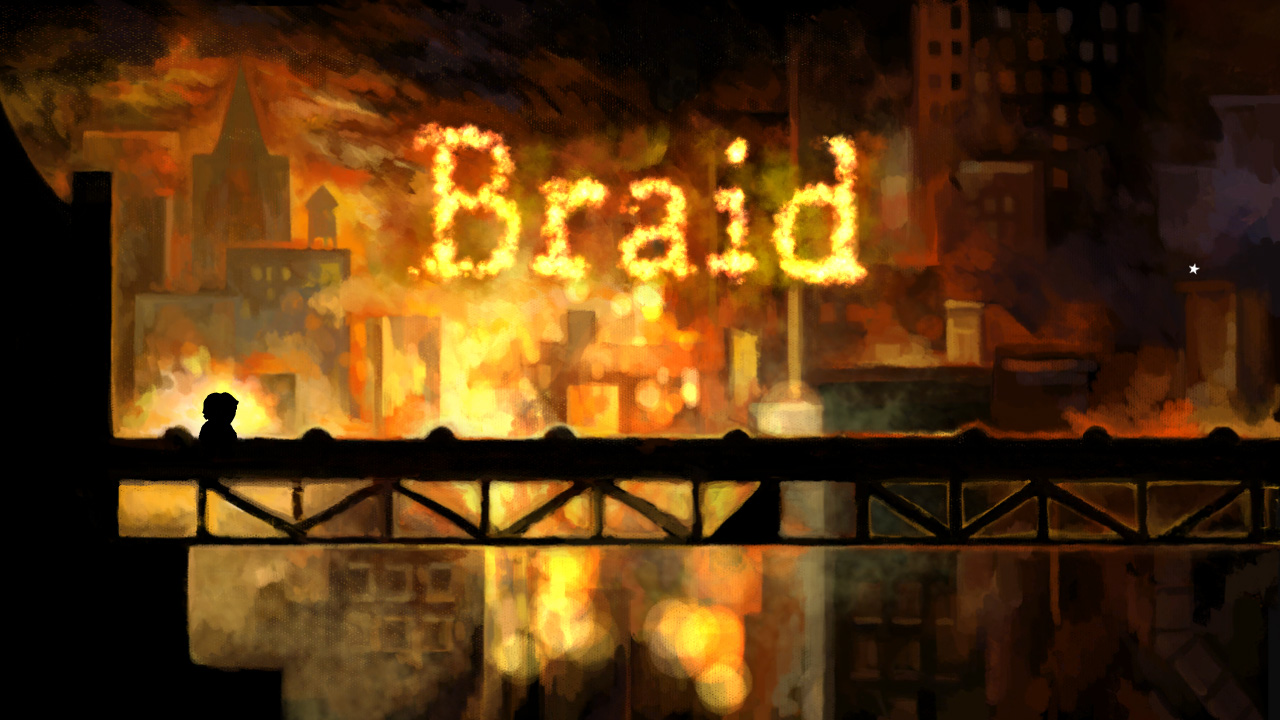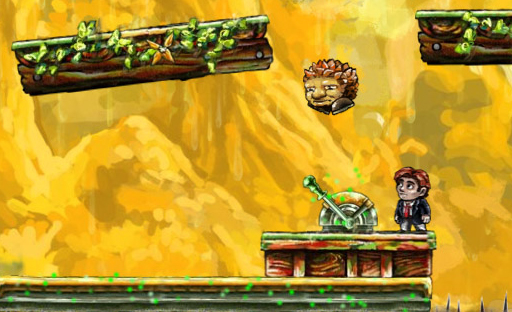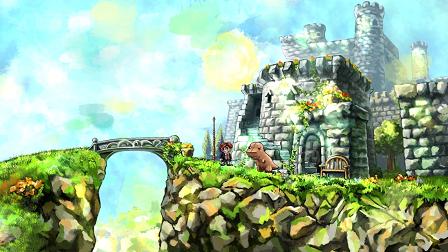This post has not been edited by the GamesBeat staff. Opinions by GamesBeat community writers do not necessarily reflect those of the staff.
 "This game looks like crap. And it's annoying. What’s the deal? It looks old."
"This game looks like crap. And it's annoying. What’s the deal? It looks old."
Not exactly the accolades one would expect for an otherwise-celebrated work of art, but such were the comments from my wife as I (finally) played Braid this past weekend.
It was better than advertised. Braid, I have the greatest confidence, will be remembered and replayed as an artistic piece that will inform future game development for years to come. All hyperbole heaped upon it is completely justified; yea, even that of former 1UP employee Nick Suttner.
That said, I am sure the game’s developer, Jonathan Blow, would slap me around the ears: I used a guide five times en route to finishing the game.
Blow has been as adamant that players should not consult walkthroughs for Braid as he’s been enigmatic about Braid’s ultimate message. The artist, and I don’t hesitate to use the word, is mistaken in this regard. To completely dismiss the use of a guide is a bold act in two regards. First, it says more about Blow’s own perception of the mechanics and puzzles he has designed than the players navigating them. Second, it ignores how we consume art.
 Don’t get me wrong — Braid is an achievement. It is also a game played by hundreds of thousands of people, some of whom will simply not clue into a puzzle or even a piece of a puzzle. Of the five times I consulted a guide, I probably could have figured out the solution in three instances with a bit more time. The other two? I was totally out to lunch in how I had understood the mechanics and the puzzle and would have, knowing my own approach to video games, taken hours to figure it out — and then only by chance.
Don’t get me wrong — Braid is an achievement. It is also a game played by hundreds of thousands of people, some of whom will simply not clue into a puzzle or even a piece of a puzzle. Of the five times I consulted a guide, I probably could have figured out the solution in three instances with a bit more time. The other two? I was totally out to lunch in how I had understood the mechanics and the puzzle and would have, knowing my own approach to video games, taken hours to figure it out — and then only by chance.
Is Jonathan Blow an absolutist when it comes to using a guide for his game? Probably not. His stubborn stance on guides is likely a measured preemptive response to gamers using FAQs and walkthroughs as crutches. I will make a bold assumption: If people actually make an honest and concerted effort to play the game by themselves, he may be happy. Grudgingly.
I do assert that while his stance has some value, it is misdirected. No art is consumed and understood in a vacuum. In fact, thousands of universities and colleges have whole departments dedicated to discussing, sharing, and debating art. While a guide can’t hold a candle to a university-caliber literary analysis of, say, Charles Dickens’ works, it can be an informative method to share a game’s meaning — particularly in the case of Braid.
If video games are to succeed as art, they must use the player’s actions — not prose, not story, not character development, not visual art — as the basis to relate meaning. All these other elements inform and support video games’ true artistic vehicle: the choice and actions of the player.
 I'd argue that no game does this better than Braid. With its time-warping mechanics, the puzzles themselves develop meaning. The game’s concluding scene is an excellent example of this, where (I suppose I have to warn of spoilers at this point) the final sequence plays out in reverse, changing from two people helping each other to one running away and shutting the other out.
I'd argue that no game does this better than Braid. With its time-warping mechanics, the puzzles themselves develop meaning. The game’s concluding scene is an excellent example of this, where (I suppose I have to warn of spoilers at this point) the final sequence plays out in reverse, changing from two people helping each other to one running away and shutting the other out.
What if a puzzle does stump me and I can't proceed? What if I put the game down in frustration? I would have missed out on the greater experience and meaning Jonathan Blow meant to convey. Perhaps Braid may be the only game where a guide not only allows me to complete a task but also lets me experience the meaning inherent in a puzzle and reach a deeper understanding of the game's purpose — something I may have been missing up to that point.
So don’t feel ashamed if you had to use a guide to help you get through Braid. I needed one. I don’t feel any worse about it, and I hope Mr. Blow doesn’t feel any worse about me.
But then again, maybe he didn’t want us to use guides so that we wouldn’t find Soulja Boy’s.
